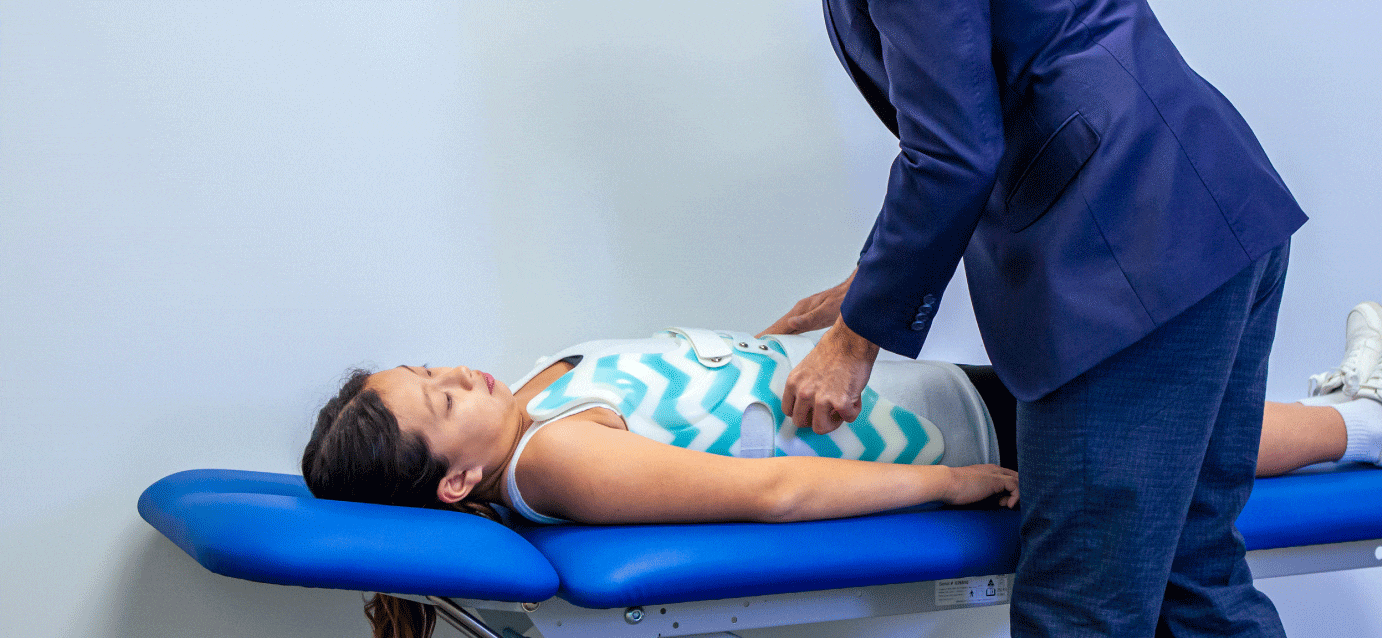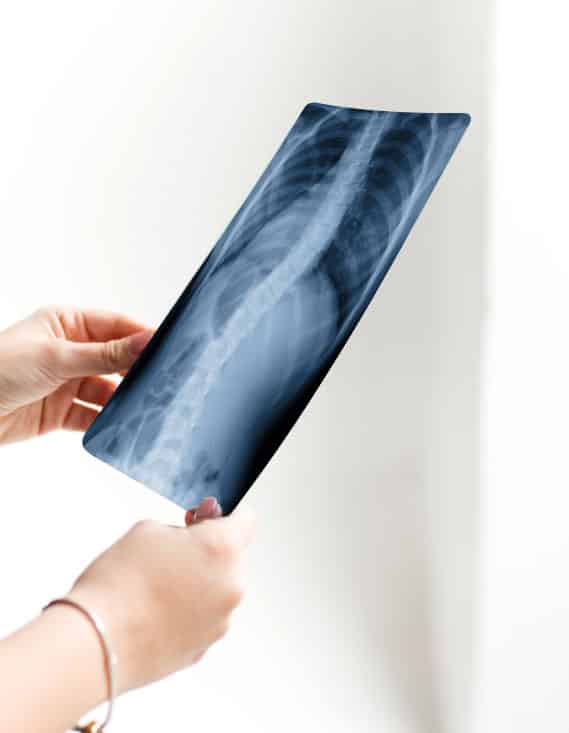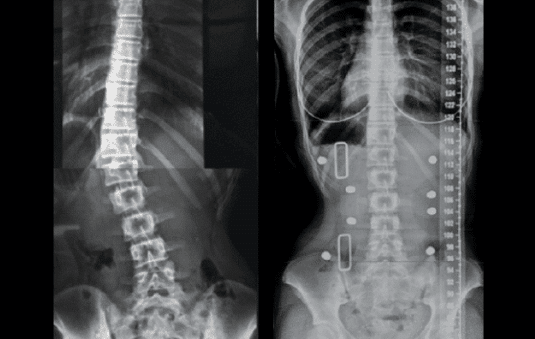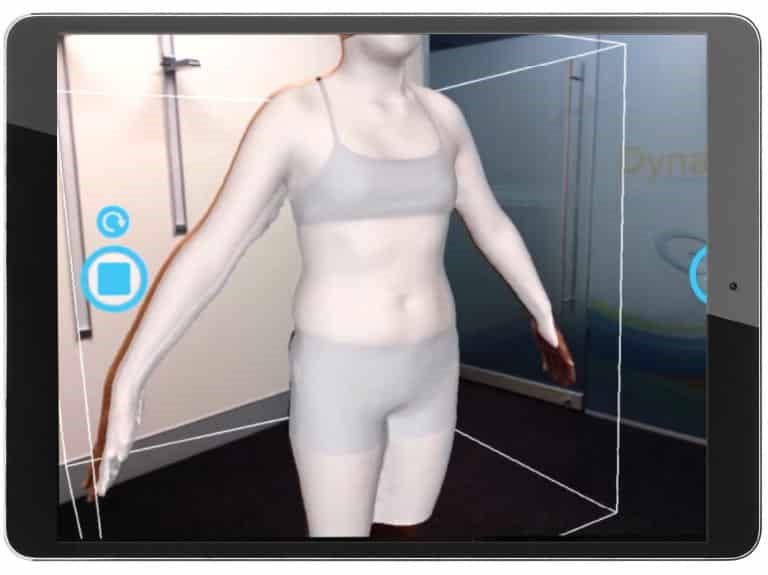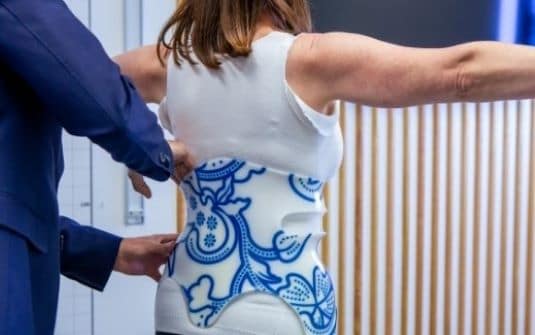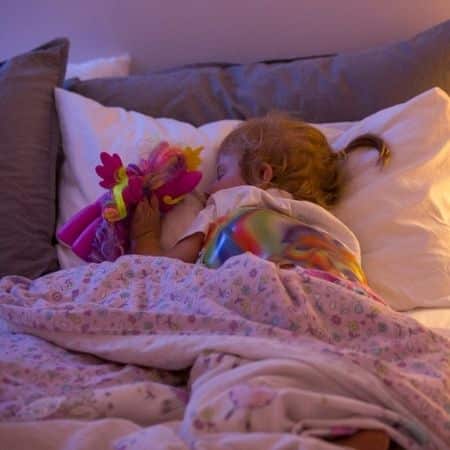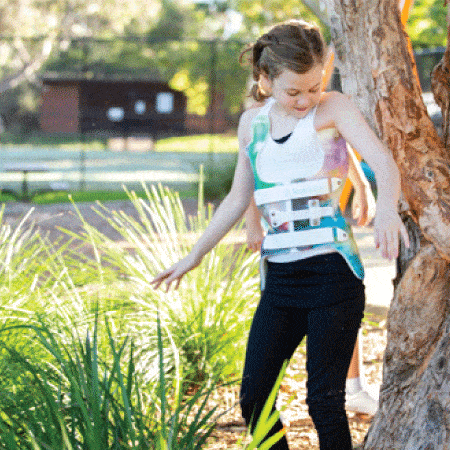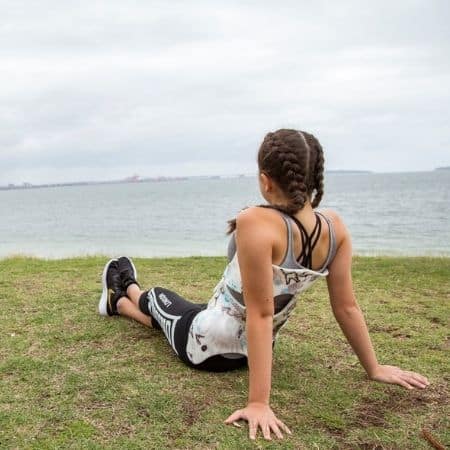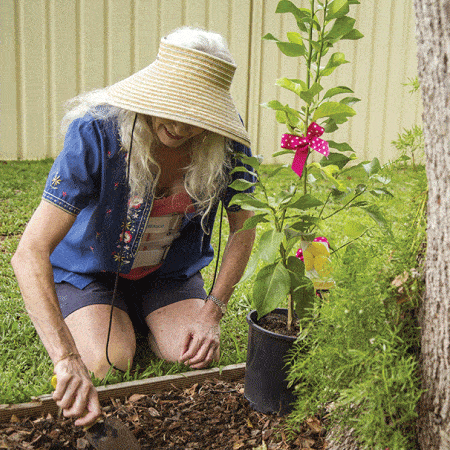Traditional Braces
Traditional scoliosis braces, which are called Thoracto-Lumar-Sacral-Orthosis (TLSO), work by attempting to hold the spine in place and are not corrective braces. Essentially traditional braces treat the spine like a fracture using three-point pressure to immobilize the area. This is the underlying theory behind most scoliosis braces, such as the Boston Brace, and has only shown moderate success in stopping scoliosis curves worsening and needing surgery#*.
The biggest ever randomized control trial done on traditional scoliosis braces, the BRAIST Study*, reported a 72% success rate for bracing compared to no brace treatment. However, the measure of success in this study was scoliosis curves not worsening during treatment to the point where the patient required surgery. In other words, a patient could have started with a 25 degree curvature (Cobb angle), the scoliosis could have worsened during treatment to 45 degrees but that patient would have still been considered a success because the curve degree didn’t reach the point where surgery was recommended. In the study, surgery was required at a curve of 50 degrees.
#Thompson, G. H. (2007). A Comparison of the Thoracolumbosacral Orthoses and Providence Orthosis in the Treatment of Adolescent Idiopathic Scoliosis. J Pediatr Orthop, 27, 369Y374.
*Weinstein, S. L., Dolan, L. A., Wright, J. G., & Dobbs, M. B. (2013). Design of the bracing in adolescent idiopathic scoliosis trial (BrAIST). Spine, 38(21), 1832.

